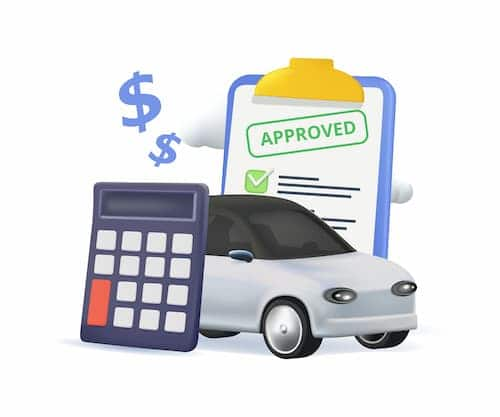- Does bundling always save money?
- How does bundling home and car insurance work?
- When is bundling home and auto worth it?
- Pros and cons of bundling your home and auto insurance
- Why do insurance companies offer discounts for bundles?
- Should you bundle your insurance? The bottom line
- Methodology
- FAQ: Is bundling the best way to save?
Does bundling always save money?
Bundling your auto and home insurance policies will always reduce your rates on both policies, thanks to the multi-policy discount. The average discount is 14%. But that doesn't mean it's the best deal.
When we compared the best home and auto bundles, the data showed that a customer with Travelers could bundle home and auto insurance for an average annual cost of $4,706, a savings of 11%.
However, if that same customer bought auto insurance from Travelers and home insurance from Amica, the total cost would be $3,587, a savings of $1,119 a year over bundling with Travelers.
Take a look at these two examples where bundling doesn't save money overall.
Example A: Mason
Mason has his home and auto insurance bundled with COUNTRY Financial. His current average bundled rate is $4,386. That's a bundling discount of 18%.
If Mason were to keep his auto insurance with COUNTRY but change his home insurance coverage to Allstate, his car and home insurance costs would break down to:
- Auto insurance with COUNTRY: $1,680
- Home insurance with Allstate: $2,098
- Total cost: $3,778, a savings of $608 a year
Example B: Salvatore
Salvatore bundles his home and auto insurance with Progressive. The total cost of his home and auto insurance with the bundling discount is $4,568.
If Salvatore were to switch his home insurance coverage to Mercury, his total cost for car and home insurance would look like this:
- Auto insurance with Progressive: $1,998
- Home insurance with Mercury: $1,388
- Total cost: $3,386, a savings of $1,182
In both examples, it can be seen that while a big discount was offered by the insurer for bundling home with auto, the buyer could save even more if they purchased the policies separately.
Of course, these are average rates, and it’s important to compare rates for your specific needs to determine whether a bundle is a better deal for you.
How does bundling home and car insurance work?
It's pretty simple: you buy more than one type of insurance from the same company, and they give you a discount in return. But there are some things you should know:
- Bundling discounts vary by company and may not be available in all states.
- No matter where you live, bundling your homeowner’s policy with your car insurance will get you larger savings than bundling it with a condo, renter’s insurance or life policy.
- The way your discount is applied to your insurance policy varies. The discount isn’t the same for each coverage type. Each carrier has its own formulas, and companies may offer a larger discount on one than the other.
When is bundling home and auto worth it?
While it’s not always the cheapest route, bundling your home and auto insurance is generally a good way to save.
“It’s still one of the best strategies to save,” says Randy Humphreys, an insurance broker with Reliable Risk Management, a full-service agency in Phoenix. “People with higher-end coverage in particular, who aren’t as price sensitive, prefer to go with one carrierAn insurance carrier is the company that provides your car insurance policy and pays claims. for the convenience.”
In addition, bundling insurance has other benefits besides cheaper rates:
- You deal with only one insurance company.
- You may be able to manage your policies online at the same place or through the same agent.
- It’s easier to identify coverage gaps.
- Depending on the company, you may be able to align the renewal periods and effective dates of both policies or combine your billing statements.
There may be other perks as well when you bundle auto and home insurance, depending on the company and state you live in. For example, Safeco offers customers who bundle a single-loss deductibleThe deductible is the amount you pay out of pocket for a covered loss when you file a claim.. That means if your car is damaged in the same event that damages your home, such as a fire, your car insurance deductible is waived after your homeowners deductible has been paid.
Pros and cons of bundling your home and auto insurance
There are both benefits and disadvantages to bundling home and auto insurance.
Pros:
- Home and auto insurance discounts apply to both policies
- You will have a single insurance bill and single company to deal with
- Some insurance companies offer a single deductible when your bundled car and home are damaged in the same event.
Cons:
- You may be paying more for one or both insurance policies
- The discount is not the same on both insurance policies
Why do insurance companies offer discounts for bundles?
For insurers, it makes simple business sense to offer you a discount. For starters, they not only want to win your business, but they also want to keep it.
If you have more than one policy with an insurer, you are more likely to stay with that company rather than go shopping around. It can be considered a loyalty factor, but it’s also a matter of the work required to shop for multiple policies.
Insurers also know that acquiring a customer costs time and money, and once you have that customer on board, the administrative costs are minimal.
Homeowners also have a record of being less likely to file a claimAn insurance claim is a request you make to your insurance company for coverage after your car is damaged or you have an accident. You can file a claim online, by phone, or in writing. on their auto policies, and insurers much prefer customers with a lower risk profile.
Should you bundle your insurance? The bottom line
Generally, bundling is a great strategy for saving on your car and home insurance and could be the way to get the best deal on both policies.
Just be aware that it’s not always the cheapest route. You may get a better deal by shopping for the policies separately. While it takes a little longer, checking the rates for both bundled and separate policies could save you a lot of money.
Methodology
We partnered with Quadrant Information Services to field auto and home insurance rates across all 50 states and Washington, D.C.
Unless otherwise indicated, averages are based on our full coverage data set. This data set is based on:
- Bodily injury liability of $100,000 per person and $300,000 per incident
- Property damage liability of $100,000 per incident
- Comprehensive and collision deductibles of $500
- 40-year-old driver
- Honda Accord LX
- Good credit
- A clean driving record
- 12-mile commute, 10,000 annual mileage
National and state home insurance averages are based on the following parameters:
- $300,000 in dwelling coverage
- $300,000 in liability coverage
- A $1,000 deductible
- A 2% hurricane deductible in applicable states
- Good credit
Learn more about our data and methodology.
FAQ: Is bundling the best way to save?
Is bundling home and auto insurance worth it?
Bundling home and auto insurance is worth it if you find a bundle that fits your budget and you prefer the convenience of having one insurance company for both. Many people do save money with auto insurance bundles.
How do you bundle home insurance and auto insurance?
Simply purchase your car and home insurance from the same insurance company to bundle your coverage. You can also bundle renters insurance and condo insurance with your car insurance for a discount.



